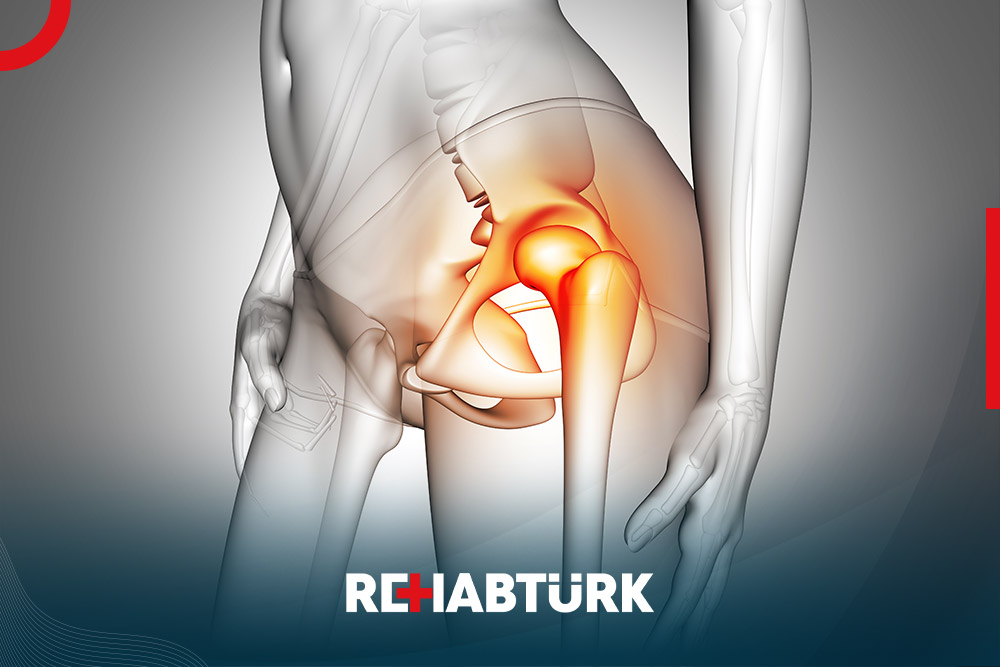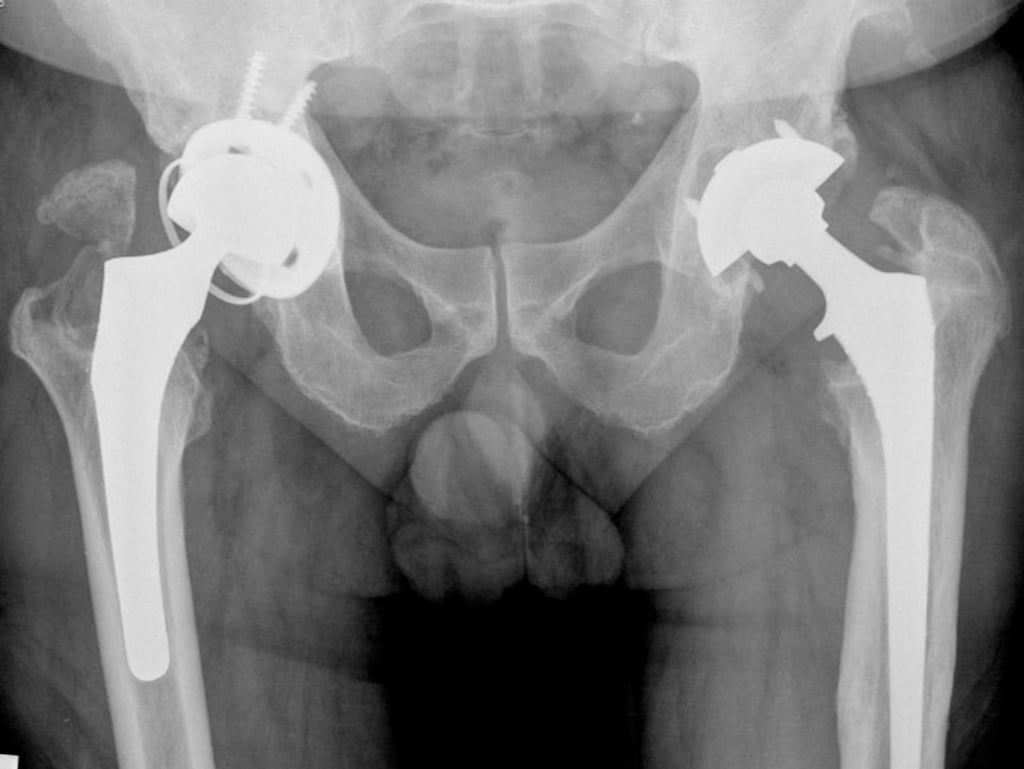Hip Replacement in Türkiye
Hip replacement is a procedure in which a doctor surgically removes a painful hip joint with arthritis and replaces it with an artificial joint, often made of metal and plastic components.
This is usually done when all other treatment options have failed to provide adequate pain relief. The procedure should relieve a painful hip joint, making walking easier.
How do I prepare for hip replacement surgery?
- Your doctor will explain the procedure to you and give you an opportunity to ask any questions you may have about the procedure.
- You may be asked to sign a consent form giving you permission to perform the procedure. Read the form carefully and ask questions if something is not clear.
- In addition to a complete health history, your healthcare provider may perform a physical exam to make sure you are in good health before surgery. You may undergo blood tests or other diagnostic tests.
- Tell the doctor if you are allergic or allergic to any medications, latex, adhesive tape, or anesthetics (local and general).
- Tell the doctor about all the medicines you take. This includes prescription and over-the-counter medicines and herbal supplements.
- Tell your doctor if you have a history of bleeding disorders or if you are taking any blood thinners (anticoagulants), aspirin, or any other medicines that affect blood clotting. You may need to stop taking these medicines before surgery.
- Tell the doctor if you are pregnant or think you may be pregnant.
- You will be asked to fast for 8 hours before the surgery. This usually means after midnight.
- You may be given medication (a sedative) before surgery to help you relax.
- You may meet with a physical therapist before surgery to talk about rehabilitation.
- If you smoke, stop before surgery. Smoking can delay wound healing and slow down the recovery period.
- Lose weight if you need to.
- Do conditioning exercises as prescribed to strengthen the muscles.
- Arrange for someone to help you at home for a week or two after you are discharged from the hospital.
- Depending on your health condition, your healthcare provider may order specific tests or other tests.

What happens during hip replacement surgery?
Hip replacement surgery can be performed traditionally or using what is considered a minimally invasive technique. The main difference between the two procedures is the size of the incision.
During hip replacement surgery, you’re given general anesthesia to relax your muscles and put you into a temporary deep sleep. This will prevent you from feeling any pain during the surgery or having any awareness of the procedure. Alternatively, a spinal anesthetic may be given to help prevent pain.
The doctor will then make a cut along the side of the hip and move the muscles attached to the top of the thigh bone to expose the hip joint. Next, the ball portion of the joint is removed by cutting the femur with a saw. An artificial joint is then attached to the thigh bone using either cement or a special material that allows the remaining bone to adhere to the new joint.
The doctor then prepares the surface of the hip bone — removing any damaged cartilage — and attaches the replacement socket portion to the hip bone. The new ball portion of the femur is then inserted into the socket portion of the hip. A drain can be placed to help drain fluids. Then the doctor reattaches the muscles and closes the incision.
While most hip replacement surgeries today are performed using the standard technique (an 8- to 10-inch cut along the side of the hip).
In recent years, some doctors have been using a minimally invasive technique. Where one or two pieces are cut from 2 to 5 inches long. The same procedure is performed through these small cuts as with hip replacement surgery.
Small wounds are believed to reduce blood loss, relieve pain after surgery, shorten hospital stays, reduce scar appearance, and speed recovery.
What happens after surgery?
You’ll likely stay in the hospital for four to six days and may have to stay in bed with a wedge-shaped pillow between your legs to keep your new hip joint in place.
A drainage tube will likely be placed in your bladder to help you go to the bathroom. Physiotherapy usually begins the day after surgery, and within days you can walk with a walker, crutches or crutches. You will continue physical therapy for weeks to months after surgery.

What activities should I avoid after hip replacement surgery?
Anywhere from 6 to 12 months after hip replacement surgery, pivoting or twisting on the involved leg should be avoided. You should also not cross the injured leg past the midline of the body or turn the injured leg inward and it should not be bent at the hip 90 degrees. This includes bending forward at the waist and squatting.
Your physical therapist will provide you with adaptive techniques and equipment that will help you follow any of the above instructions and precautions while performing daily activities. Remember, by not following your therapist’s recommendations, you could dislocate your newly replaced hip joint and may require another surgery.
Even after your hip joint has healed, you should avoid certain heavy sports or activities. The replacement joint is designed for normal daily activity.
What can I do at home after surgery?
There are some simple measures you can take to make life easier when you return home after hip replacement surgery, including:
- Keep stair climbing to a minimum. Make arrangements so that you only have to go up and down once or twice a day.
- Sit on a firm chair with a straight back. Chairs may not be used.
- To help avoid falls, remove all carpeting and keep floors and rooms free of clutter.
- Use an elevated toilet seat. This will help prevent you from bending too far at the hips.
- Keep excited pets away until they are fully healed.
- You should ask your doctor before returning to activities such as driving, sexual activity, and exercise.
Is hip replacement surgery safe?
Hip replacement surgery has been performed for years and surgical techniques are being improved all the time. As with any surgery, there are risks.
Since you won’t be able to move around much at first, blood clots are a particular concern. Your doctor will give you blood thinners to help prevent blood clots. Infection and bleeding are also possible, as are the risks associated with the use of general anesthesia.
Other, less common concerns that you and your doctor should watch out for are:
- Your legs may not be the same length after surgery.
- You must be careful not to cross your legs or sit too low because the joint may be dislocated.
- Pieces of fat in the bone marrow may become loose, enter the bloodstream and reach the lungs, which can cause very serious breathing problems.
- Nerves in the hip area are likely to be injured from swelling or pressure and can cause some numbness.
- Replacement parts may become loose, break, or become infected.
- Talk to your surgeon about these risks before undergoing the procedure.
How long will my new joint last after hip replacement surgery?
When hip replacement surgeries were first performed in the early 1970s, it was thought that the average artificial joint would last about 10 years. We now know that about 85% of hip implants will last at least 20 years. Improvements in surgical technique and prosthetic joint materials should make these implants last longer. If the joint is damaged, surgery to repair it can be successful but is more complicated than the original procedure.
Hip replacement surgery in Türkiye
Türkiye is one of the countries in the world with the most number of hip replacement surgeries, and the highest success rates
REHABTÜRK HEALTHCARE PROVIDER NETWORK conducts hundreds of operations annually for patients who have come from outside Türkiye for treatment
In order to be able to know your chances of undergoing a hip replacement operation in Türkiye, and to know the estimated cost, all you have to do is contact the doctors of the REHABTÜRK HEALTHCARE PROVIDER NETWORK.
